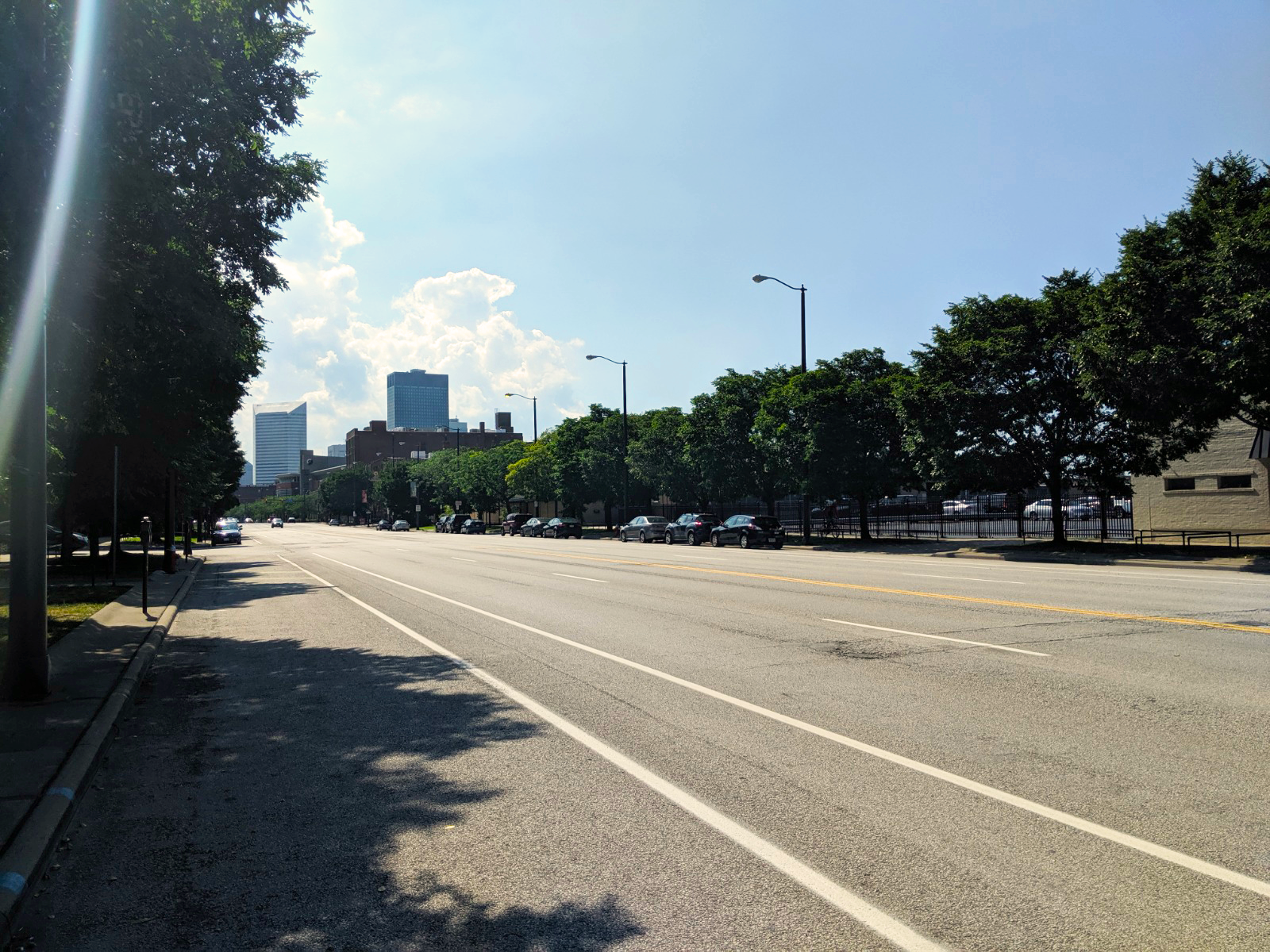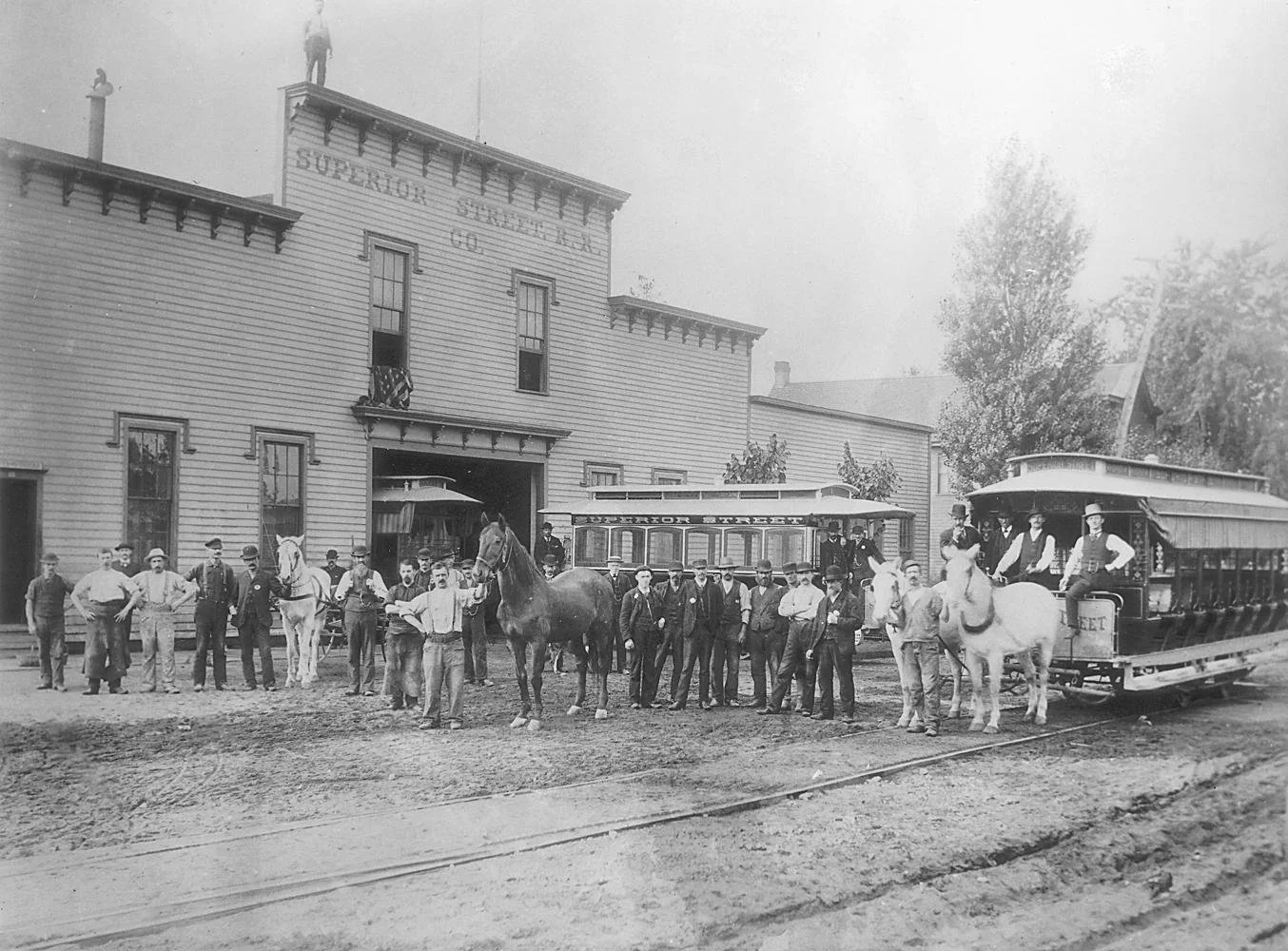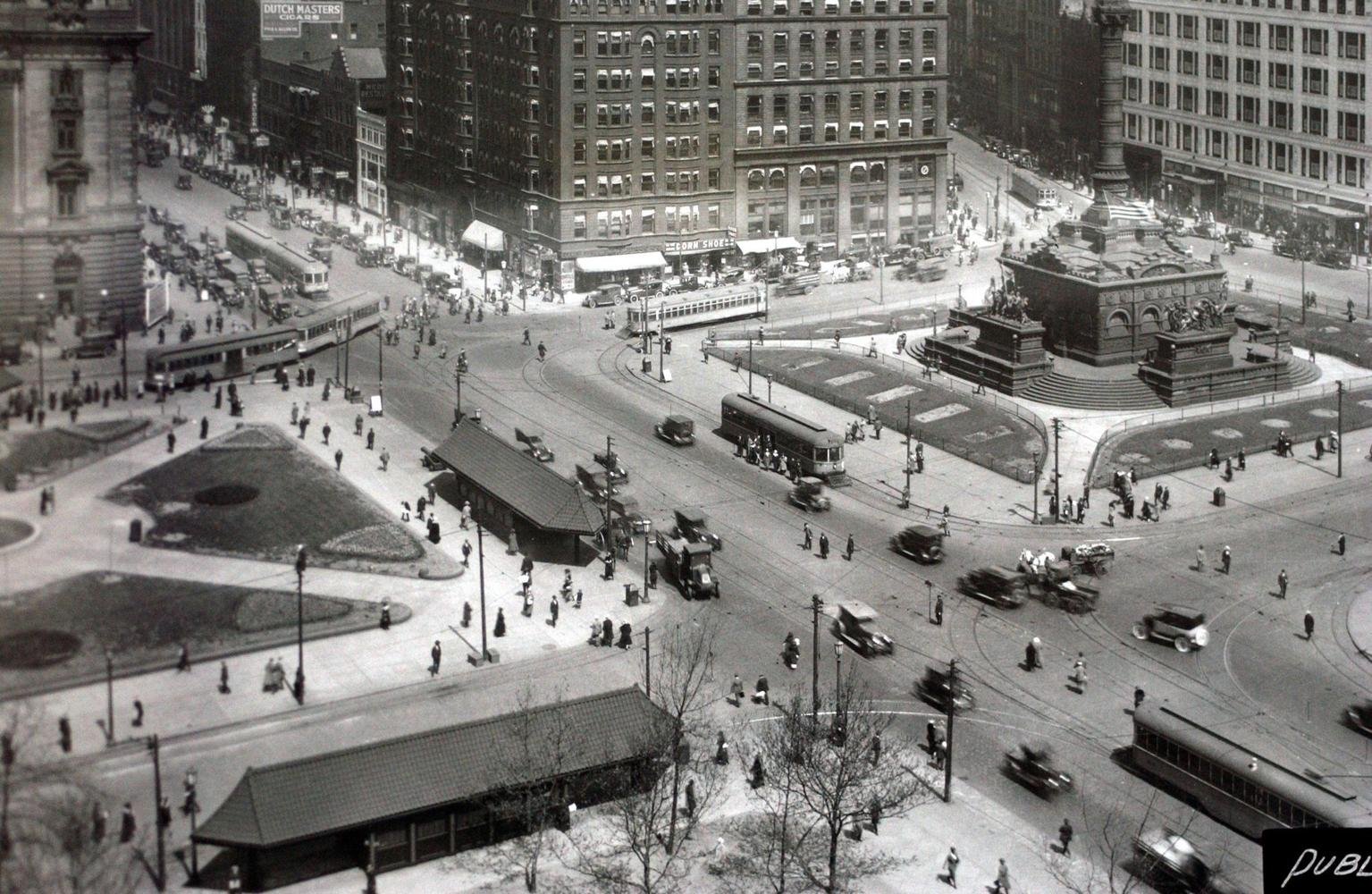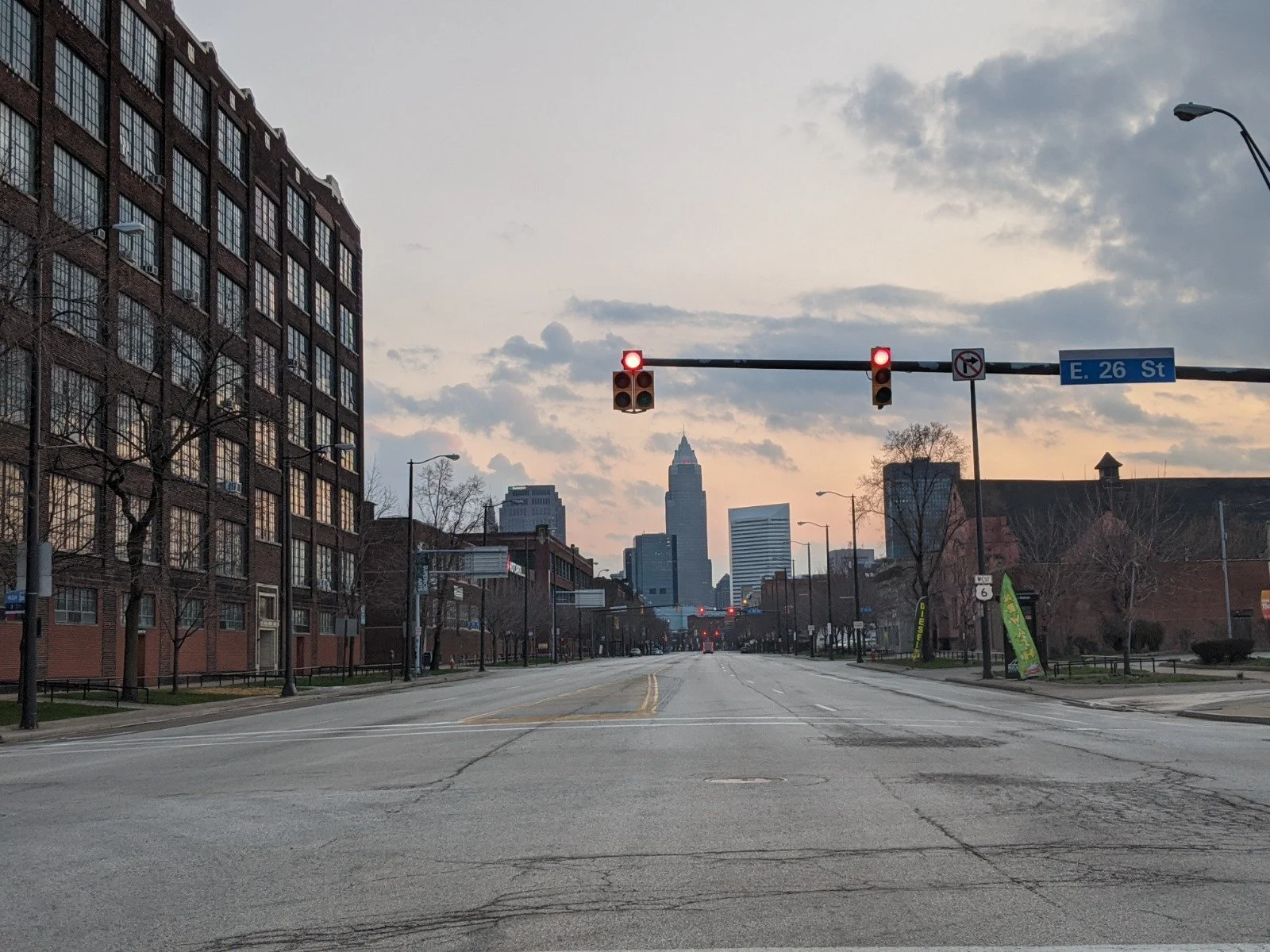
Superior Avenue
This segment of the Midway will improve safety for people walking, riding a bike, driving, or taking the bus on Superior Avenue between E. 55th Street and Public Square.
Latest Resources
Public Presentation - Project Update - March 2nd, 2025
Benefits of the Superior Avenue Segment
The Cleveland Midway: Superior Avenue proposes a continuous sidewalk-level bikeway median. Gaps in the Midway median will occur at major signalized intersections. Minor intersections will become T-intersections. Traffic will be maintained in each direction, with dedicated left-turn lanes at major intersections. Traffic signals will be updated with dedicated traffic signal heads for the midway and possible Transit Signal Priority (TSP) for RTA buses.
The Bikeway median provides a safe and comfortable east-west bicycle and pedestrian connection for riders of all ages, abilities, and socioeconomic levels to access Cleveland’s downtown and surrounding neighborhoods. The Cleveland Midway: Superior Avenue is located along an RTA priority corridor, facilitating multimodal travel and convenient transfers from foot to bike to transit.
The Superior Avenue segment of the Cleveland Midway is from Public Square to East 55th Street.
Project Process
Materials and Updates
-
The first public open house for Cleveland Midway: Superior Avenue was held at Red Space on November 14th, 2023, from 6 to 8 p.m.
Download the History of the Cleveland Midway and Superior Avenue here
Download the Corridor Site Plan here
Download Superior Avenue Section Details here
Download the Intersection Site Plans here
-
-
History of Superior Avenue
Horse-drawn streetcars from the Superior Street Railway Company, circa 1880; Plain Dealer Archives
The first horse-drawn passenger rail transit system in Cleveland was established in 1834 by the Cleveland & Newburgh Railway but quickly went bankrupt. In the 1840s, horse-drawn bus services began operating on the streets of Cleveland. With the development of mass steel production techniques around 1860, horse-bus operators began adding rails to many streets, making it easier for horses to pull cars with more people in any weather condition.
Cleveland’s Streetcar Network; 1900
From 1884–1901, the transportation system was electrified and consolidated. The first commercial electric railway in the USA ran in Cleveland. As trolleys gained popularity in the late 1800s, Cleveland had 425 miles of streetcar lines.
Public Square, circa 1912; Plain Dealer Archives
Cycling and automobile use became more prevalent in the late 1890s and early 1900s. Both user groups called for improvements to the muddy, bumpy street conditions resulting in the paving of many roads. The increasing popularity of the automobile after World War I led to the decreasing efficiency of streetcar operations, as streetcars and private automobiles typically operated in shared space. Traffic congestion led to demands for widening roadways and, ultimately, removing most of the streetcar network.
Superior Avenue & East 2nd in 1941; Cleveland Press
After World War II, significant federal funding focused on building major interstate highways, contributing to many people's decision to move from the city to the suburbs. Cleveland’s declining population made it more difficult for businesses to thrive on streets like Superior, and the increased demand for private automobile parking led to the demolition of many vacant buildings to make space for parking lots.
Present Day Superior Avenue
Today, Superior’s wide road provides excess traffic capacity, encourages dangerous driving behaviors like speeding, and can be an uncomfortable place for people walking, biking, and taking transit. The Superior Midway will utilize space formerly occupied by the streetcar to create a landscaped median with a separated sidewalk-level path for people riding bikes. The objective is to provide safe and equitable transportation options that encourage economic and health benefits for the community.





